Hey, did you know this Monday would have been Jack Kirby’s 100th birthday? I hope so! Recently, I had the realization that a number of people I’m close to had read very little of the work from the King of Comics. Keep in mind, I’m 34, and most of my pals are a wee-bit younger, with varying levels of appetite for standard superheroics – but with the big birthday approaching, I thought now would be a good time to perhaps provide them with an easy entry point that attempts to somehow be all-encompassing while also trying to scratch the surface on his impact in comics. What really fascinates me about Kirby is that his career spans the literal history of the medium. He was there just as creators were beginning to understand what a comic book should be (his work on Solar Legion and the collaborative effort Blue Bolt with Joe Simon debuted just two years after Action Comics #1), through the pre-code era as a master of genre storytelling and co-creator of the Romance genre, the birth of the Silver Age, an absolutely essential driver in the creation of the Marvel Universe, the infusion of a new and vibrant DC mythology, and working with Pacific Comics to lay down a foundation for the eventual Image Revolution. There’s a multitude of innovations between all those points, and the re-released in a new edition Kirby: King of Comics by Mark Evanier does a fantastic job covering the blow-by-blow moments of Kirby’s career.
My point in writing this isn’t to go in-depth on Kirby’s contributions in any real way; I feel as though people who actually knew him, or have studied him to any real degree are far more qualified than I (our own Editor in Chief knew the man, and may very well have something to say come Monday), but I simply wanted to share the reading list I had curated to introduce those closest to me to the work of comics’ most towering figure, through his own artistic evolution and a career that spanned basically half a century.
A couple of caveats: these are all single-issues, simply for time-management more than anything else. It’s also just a lot to ask to get those unfamiliar with the pacing and style of Golden and Silver Age comics to read stretch of issues after stretch of issues, I believe. A small sampling from each era is a much more doable task, and gives you a sense of what you like and where to go next if you so desire. The other major hurdle is access, and as such, I chose single-issues that were readily available on both ComiXology and Marvel Unlimited.
Finally, I chose 10 issues. An arbitrary stopping point, and my biases show just a tad given how weighted a certain era is in the back-end, but I liked the idea of 10 issues for 100 years.
Here’s the list:
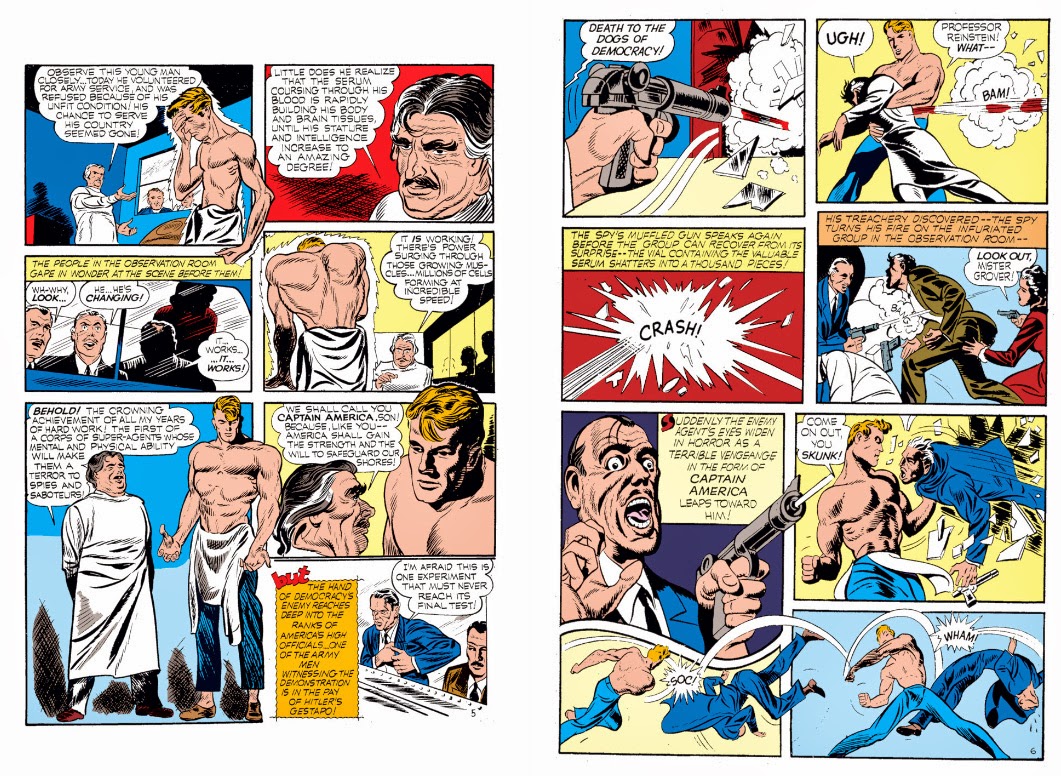
It’s hard to find a better starting point than the comic that turned Simon and Kirby into industry superstars. Going back and flipping through the issues of comics that surrounded this debut, I have to imagine a number of 10 year olds losing their minds when they first got a look at the team’s kinetic sequences within this comic’s 60 pages. By today’s standards, perhaps it appears crude, but within the context of the time it blows away the flatter, more straightforward work of many of their contemporaries. You can see the Kirby’s Hal Foster influence very early, and how he attempted to bring that visual style to a burgeoning form of media. It’s also fun to see a couple of concepts of theirs that did not take off in Hurricane (a sort of Thor-type precursor) and Tuk via the issue’s backup stories.
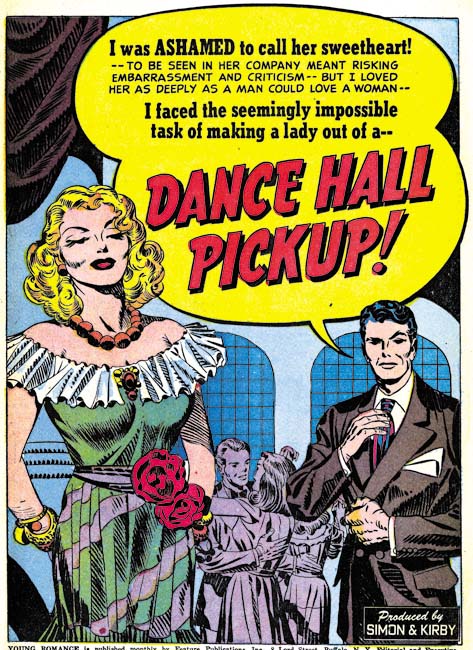
This is the ComiXology version of Young Romance #12, but in reality, I believe these two stories actually made up Young Romance #’s 15 and 16. There’s a bit of difficulty in cutting out the wheat from the chaff within Simon and Kirby’s Romance work, and I’ve never really seen a comprehensive list of “these are the best examples of those comics” beyond the wonderful Fantagraphics publications that were not feasible for what I was aiming for here. So I took a gamble and went with the story entitled “Back Door Love”, for all the prurient reasons you can imagine. Additionally this version includes “Dance Hall Pick-Up”, a bit of an anachronistic title that I found indelibly charming. It’s quite a ride navigating the gender politics of these stories, but I think they’re both a worthwhile peek into how a pair of forward thinking creators approached varied relationships between men and women at the turn of the 50’s. Also, maybe more excitingly for me, this is where Kirby’s art begins to really take shape, with his figure work looking especially crisp. The static nature of these stories also makes for curious reading, particularly for an artist well-known for his constant action and forward motion.
I’m saddened that so little Kirby and Simon work is available digitally, as titles like The Strange World Of Your Dreams would have especially appealed to my little crew, but c’est la vie!
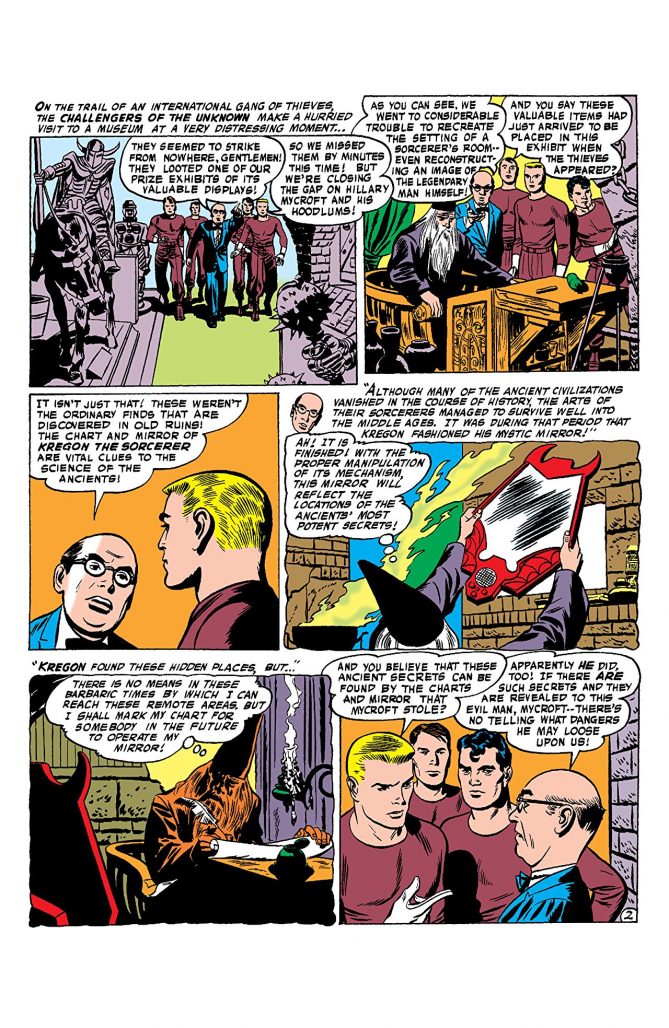
And here we come to Kirby’s second tour of duty at National/DC, with probably his most important work of that period. I chose Issue #3 of this series since it seems to lay the groundwork for where some of the basic concepts that drive the Fantastic Four. The Challengers have generally, from outward appearances, seemed to have been an FF prototype. It’s this issue, where one of their number goes to space and gets strange powers (like the ability to conjure flames or turn invisible), that really feels like the seed from which Marvel’s First Family sprouted. A pair of fun adventure stories can be found within these pages, which, while not exactly the best work of Kirby’s career, at least acts as a prelude for what’s to come. As an additional note, it’s worth observing how Kirby’s visual style was stifled just a tad on this title, as Wally Wood (or Marvin Stein, it’s a little unclear) was brought on to smooth out Kirby’s pencils. It’s still recognizably his work, but just a little smoother, and edging just a bit towards that Curt Swan house-style that the publisher valued.
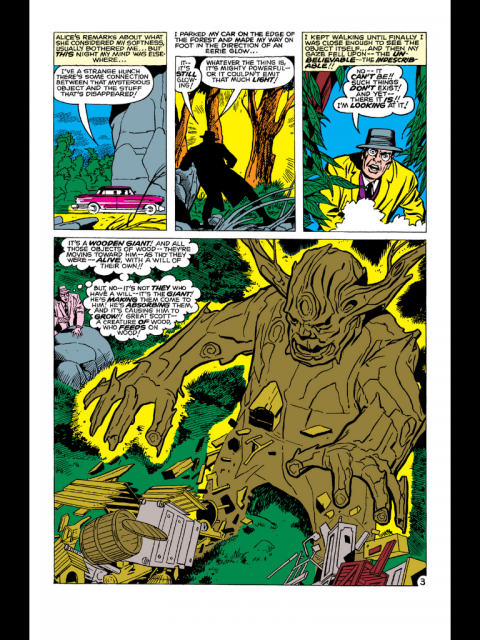
Much like his Romance efforts, you could blind buy any of his Atlas work in Strange Tales, Journey into Mystery, Tales to Astonish, or Tales of Suspense and probably come away with a fun little set of yarns about giant monsters and O. Henry-style endings (at least with the Steve Ditko stories that generally accompanied it). I went with this issue for the obvious reason that it’s the debut of a certain very large talking tree that has captured the hearts of movie-goers everywhere. Of course, this Groot is completely different than the one that’s selling tons of Guardians of the Galaxy merchandise, but knowing just how far back that character stretches into Marvel history is valuable. I personally get a great thrill thinking the origins of the Marvel Universe in anthology books like these, how the titles slowly morphed into superhero books from these post-code horror, sci-fi, and fantasy short “blockbusters”. More than anything, this represents an example of Kirby’s limitless imagination and the sheer thrill of discovering whatever kind of crazy drive-in style monster he could conjure up next. Not to be forgotten, if you read this on Marvel Unlimited, you thankfully get a few shorts from both Ditko and Don Heck; the former of which’s more intimate EC-style horror marks a stark contrast to Kirby’s continually growing bombast. The foundations of a multimedia empire can be found here.
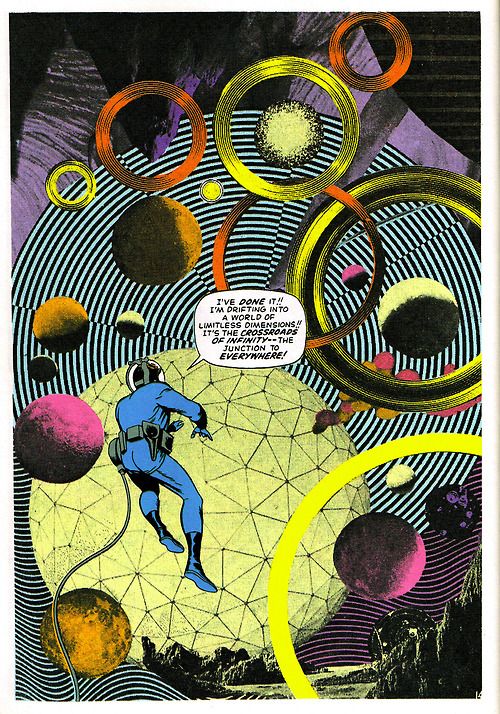
Picking a favorite FF tale is like picking a favorite child. It’s basically impossible when you’re talking about one of the finest, if not THE finest, superhero runs of all time. But I think Stan and Jack’s “This Man…This Monster” is an ideal done-in-one experience for the unfamiliar reader. Within these pages you basically get it all: Ben’s existential angst, Reed traversing an unexplored realm (in this case, the Negative Zone), a huge Kirby machine, and interstellar photo-collage, Wyatt Wingfoot, and most importantly the pitch-perfect brushwork of Joe Sinnott. Kirby worked with a number of excellent inkers throughout his career, and some less so, but Sinnott is generally seen as the one who brought out the best in his pencils. This issue is a surprisingly intimate journey in the midst of two landmark stories – the Galactus Trilogy and the debut of Black Panther respectively – but it succinctly defines everything that made the series so special, the perfect mix of many of the genres Kirby had worked in over the previous decade.
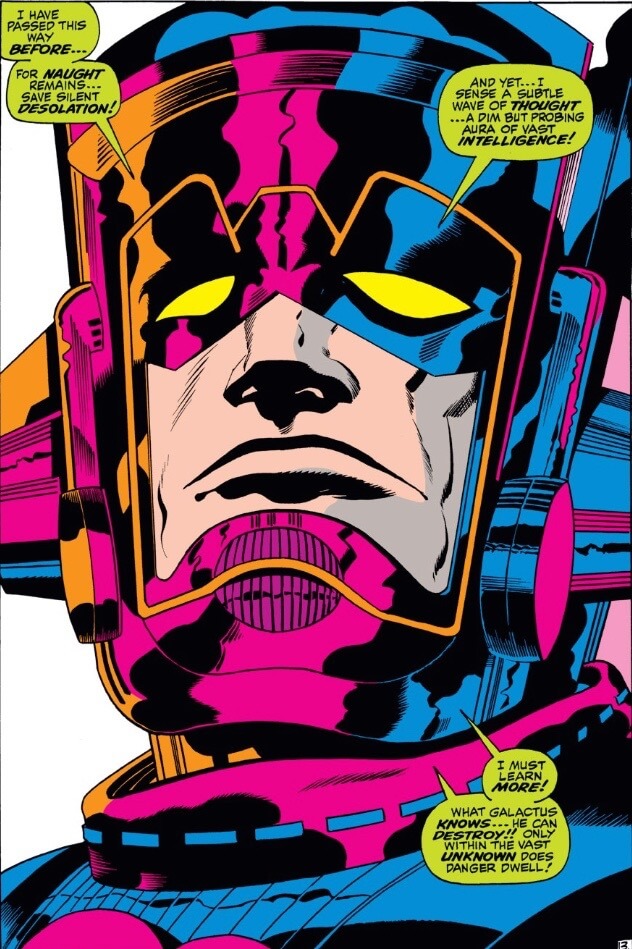
“And now…Galactus!” That dramatic cover says it all, as Kirby and Lee’s other landmark series’ star Thor comes face to face with their most terrifying creation…eventually. In actuality, Thor never meets Galactus in this first chapter of a second trilogy focused on the world-devourer, but instead runs into a gauntlet of brilliant Kirby concepts – one on top of the other: an unexpected partnership with the Rigellians, a reunion with The Recorder, squaring off with a Taurian for the first time, and the arrival of The Wanderers. All that, and you still have Galactus potentially biting off more than he can chew as he faces down the power of Ego The Living Planet. This is Kirby bursting at the seams with ideas as his time at The House of Ideas was winding down to a close. Honestly, the only challenge faced by someone reading this issue is stopping with that blistering cliffhanger, even in my recent re-read of it – approaching what had to be my tenth or so, I just wanted to keep going. As a final observation, the inking of Vince Colletta is worth comparing to that of Sinnott. While Colletta is certainly a controversial figure among Kirby partisans, I enjoy his thinner, scratchier approach to the figures at times and especially within this series. To my eyes, it provided a nice bit of visual differentiation from that lusher work within Fantastic Four. For further reading, check out this great Matt Seneca piece on the subject from a few years back.
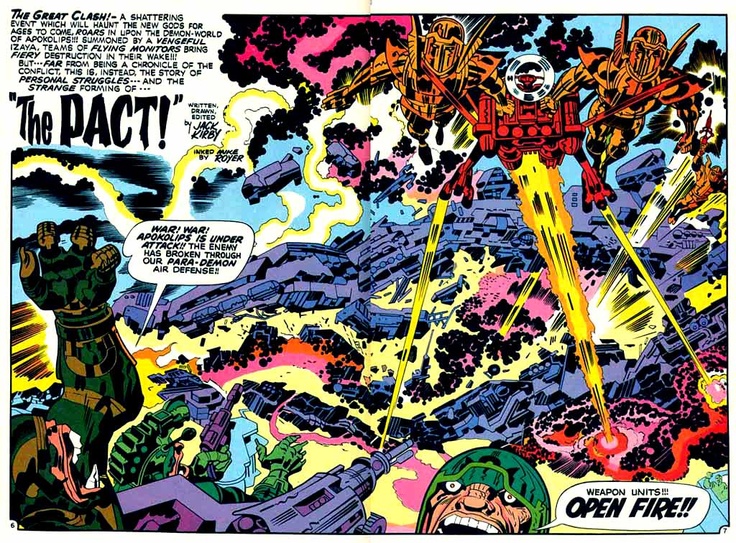
Mister Miracle #9 (1972)
What do you do after you’ve basically perfected the superhero comic, anyway? In Kirby’s case, you literally create your own mythology from whole cloth, and with his jump back to DC for his third go-round there, he did just that. While his Fourth World saga will forever be imperfect in its unfinished nature (but even then, as the years go on, I come to cherish it more and more – even the pasted on Superman faces), these two issues, “The Pact” and “Himon” are near-biblical. The end of the war and how it began anew, a fateful decision to save lives and in turn ruin others, and the rise of the DC Universe’s greatest threat. You could know zero about DC lore and have never read an issue of any preceding chapter within this saga, and none of the power of these two comics would be lost. They’re absolutely perfect, and there’s a good argument to be made that superhero comics still haven’t found a way to better them. I grant that going from Lee’s breezy dialogue in the above two examples to Kirby’s “shouted from the rooftops” style can make for a tough transition, but once you fall under its spell, you quickly realize this is the stuff of epics.
OMAC #1 (1974)
After the Fourth World titles were abruptly cancelled, the rest of Kirby’s tenure at DC was focused more on developing new concepts playing in a few different genres, a change of pace from his earlier attempt to create a sort-of Lord of the Rings trilogy for comics, as his initial effort was framed. Ironically, his longest running title at the publisher (that he remained involved in) came during this era with Kamandi. And while titles like that, The Demon, and Our Fighting Forces are all great fun to read respectively, Graeme McMillan talked the sense into me I needed that OMAC was the way to go, a first issue it’s hard to deny the power of. Originally envisioned as “Captain America, but in the future”, OMAC #1 is set in the world that’s coming, a corporate run dystopia where women are packaged and built for nefarious purposes, while the masked agents of the Global Peace Agency have their own shadowy scheme – leading to the introduction of Brother Eye, and the title character. The rest of the series doesn’t quite live up to this, and it ends abruptly, but this first issue is a concentrated blast of Kirby whose moving parts have played a fairly significant role in a few different recent DC events.
Captain America #193 (1976)
For the last pick, I bemoaned the lack of access of a few different high points in the late stage of Kirby’s career. My first thought was the 2001: A Space Odyssey adaptation, which while not one of his favorite projects to work on, was certainly an artistic highpoint. Unfortunately it’s not available, surely due to rights issues on the material. Then I thought perhaps an issue of Captain Victory and the Galactic Rangers might suffice, but it also is not yet available in any kind of reprinted, easily obtainable form. So, I found myself flipping a coin between the first issue of The Eternals or his return to Captain America. Not being able to resist the idea of starting with Steve Rogers and ending with the same character, I went with the latter. It’s a tense adventure that attempts to capture the public unrest and distrust of authority that was a defining focus of the mid-70’s. To some extent, the ideas present within “The Screamer In The Brain” feel awfully relevant today. This is no surprise, as even when he was edging toward the end of his reign, The King still had his eyes firmly fixed on the future.
Those are my picks. Tell me yours – tell me what I’m missing, or what you plan to read this week in celebration. No matter what you read, so long as Kirby’s name is on it, I don’t think you can go wrong. Happy Birthday, Jack!


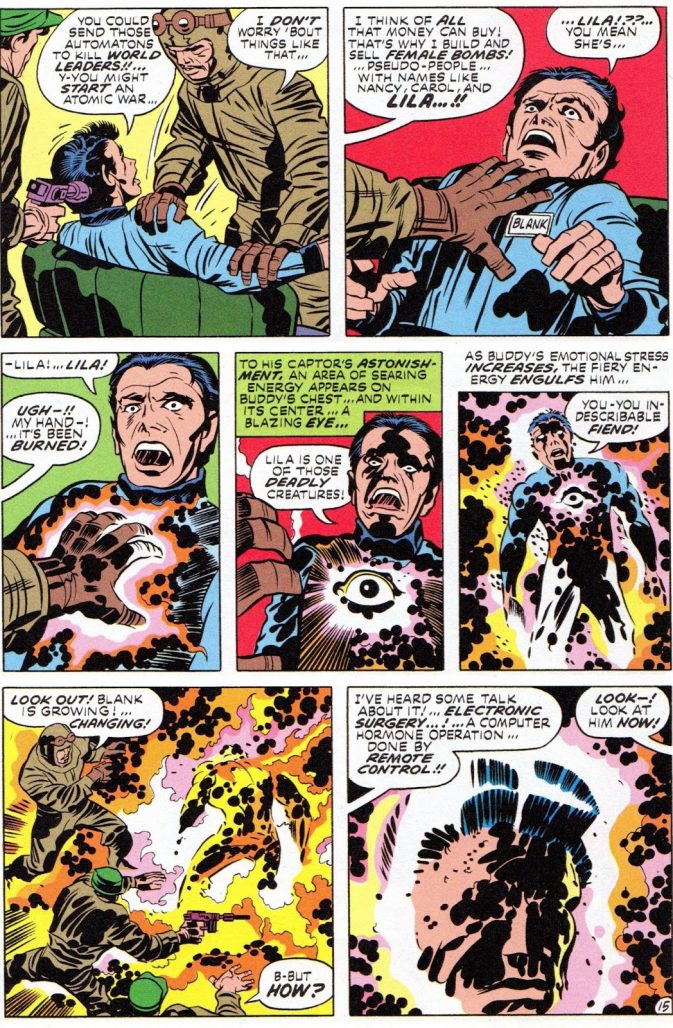
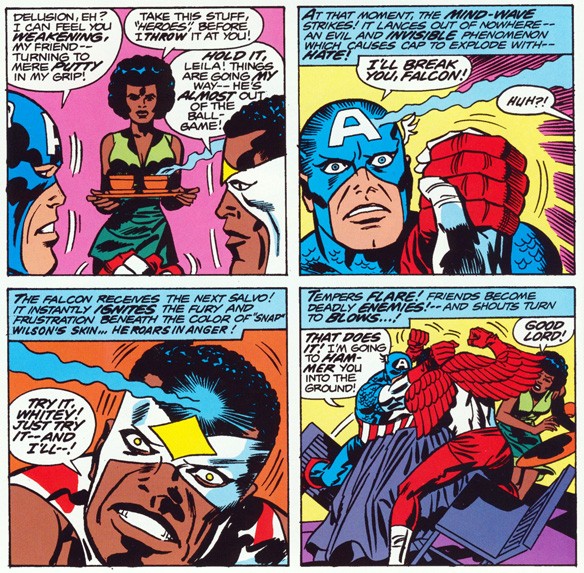





That OMAC comic is definitely up there. One of my favorite single issues of all time.
I really like the 2001 adaptation as well. I have yet to find a good-quality treasury edition in the wild.
I like FF 49 with the way he really made the Torch fly through some obscure stuff and it felt really like the dire end of humanity.
The first part of Reed’s dialogue in that Fantastic Four page — “I’ve done it. I’m drifting into a world of limitless dimensions.” — was used as the last line of the utterly spellbinding metal album Purple, by Baroness. Then I look at the name of the author of this article, and remember that Baroness also wrote a song called “Rays on Pinion”.
Just FYI, I believe that the Thor issue with Galactus is inked by George Klein, not Colletta (for some good Colletta inking, I would recommend the classic Thor 126 where the God of Thunder fights Hercules). Great list nonetheless!
Whoops, never mind, I was thinking of later Galactus issues (circa Thor 169) which were inked by George Klein. Sorry! It appears Colletta did ink 160.
“The other major hurdle is access … I’m saddened that so little Kirby and Simon work is available digitally.”
The public domain site Comic Book Plus has a number of Simon and Kirby’s comics for Prize Comics, from the late ’40s and early ’50s (Black Magic, Young Love, Justice Traps the Guilty, etc). You won’t find superheroes here, just some excellent comics — and all free.
Great list! The funny thing about that Groot intro story, is that the main character is determined to be brave because his wife is constantly scolding him for being a wimp! It’s certainly interesting to read in 2017.
Great article!! Really enjoyed this one!
Kirby on the cover of Headline Comics in 1949. Joe Simon is the cop holding a gun. The comic can be read for free at Comic Book Plus.
https://www.comics.org/issue/127909/cover/4/
Thanks George, I really need to dig into these online Golden Age databases more. Sadly, Boys’ Ranch hasn’t made any of them (Marvel may still have reprint rights on that, maybe?), but I’d really like to read Foxhole.
Thanks so much to all for the kind words! Seeing so much Kirby art online yesterday and on social media made for a wonderful experience.
Comments are closed.